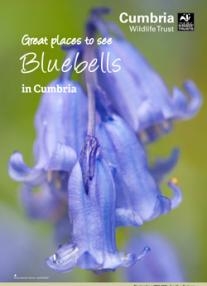Great Places to See Bluebells in Cumbria is a new guide, created by Cumbria Wildlife Trust, to help you to see bluebells in these stunning places and many more across the county.
Charlotte Rowley from Cumbria Wildlife Trust said: “Here at Cumbria Wildlife Trust we want people to love and enjoy wildlife as much as we do. Much of the rare and special wildlife that we look after can be hard to find and so I’ve designed this guide to make it easy for anyone to see our most stunning spring display – bluebells in full bloom!”
“Bluebells are an important source of springtime nectar for insects. Bee species with long tongues that can reach inside the bells, such as common carder bees, will pollinate the bluebells, but short tongued species, such as the buff-tailed bumblebee, will steal the nectar by making a small hole at the base of the bells, bypassing the pollen. Early spring butterflies will nectar on bluebells, look for brimstone, orange tip, small tortoiseshell and peacock butterflies.”
Bluebells are often found in deciduous woodlands where conditions are ideal for their growth. They favour lots of light in early spring, before the trees are in full leaf, when the leaves of the bulbs emerge but before they flower.
Tree buds bursting in to leaf create shady, cool conditions which shelter the flowers until they begin to die back.
Bluebells dislike being moved and carpets of bluebells can show that a woodland is ancient, but they also do well in many gardens and can be found in hedgerows and grassland areas.

